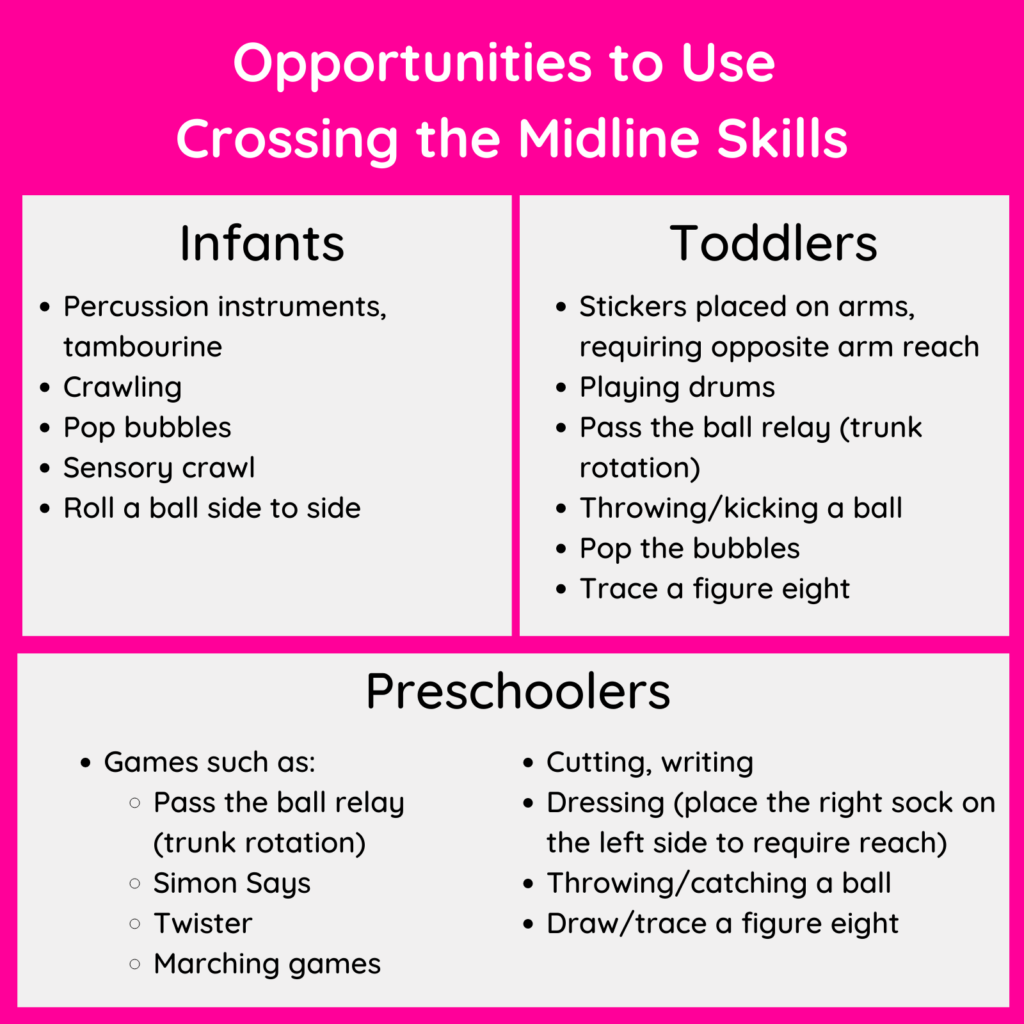
Think of the midline as an imaginary line going down the center of your body. When a child can cross their midline’s, both sides of their brain are communicating to coordinate smooth, controlled movement. With this skill, both sides of the child’s brain are in communication so that movements can be coordinated and smooth. It’s important for children to both visually (with their eyes) and physically (with hands and feet) cross their midline. Visually crossing the midline is necessary for read and writing. Physically crossing the midline is necessary for things like cutting with scissors, tying shoes, clapping, dressing, and any other activity that requires the use of both hands. Before a child can begin to physically cross their midline, they need core strength, bilateral coordination (one reason crawling is important) body awareness, and motor planning.
Signs a child is having trouble crossing their midline, you may see Amari switch hands in the middle of writing his name, Diya may turn her paper sideways to write or color from top to bottom instead of left to right, Jason may shift his body from side to side to avoid reaching across his body, Gia may struggle dressing herself or tying her shoes and Lucas may have difficulty visually tracking letters while reading and writing.

For more activities that can help your child develop crossing the midline skills, visit rayzkidz.com/category/activities